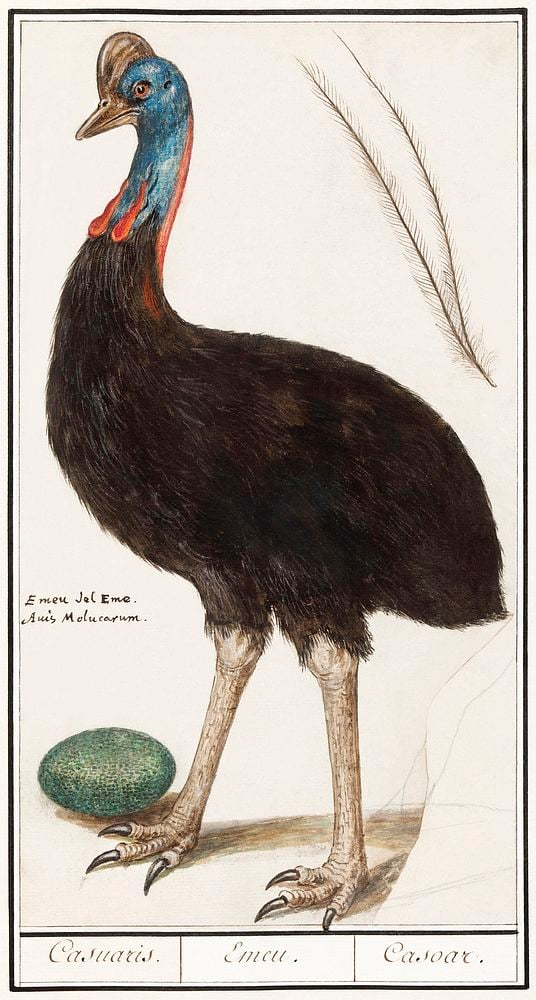Lesser known than their relatives the ostrich and the emu, this striking bird is a cassowary. Capable of growing over six feet tall and weighing up to 160 lbs, these creatures can deliver fatal blows with their clawed feet, leading to them widely being known as the most dangerous bird in the world.
Research also suggests that despite the danger they pose, humans have domesticized these birds for thousands of years, with ancient people keeping cassowaries long before we ever kept chickens.

Their distinctive colors make them an outlier among ratites (the name for the group of flightless birds including the kiwi and the rhea, as well as the ostrich, emu and cassowary). Descended from dinosaurs, specifically velociraptors, ratites range from the largest birds in the world right down to the small kiwis of New Zealand.
Size-wise, cassowaries find themselves somewhere in the middle of the ratite family – smaller than ostriches but far larger than the kiwi. Native to Northern Australia, Papua New Guinea and parts of Indonesia, their natural habitat is the rainforest.

The name ‘Cassowary’ comes from two Papuan words. The first, ‘kasu’, means horned, and the second, ‘wari’, means head. The birds’ distinctive horn is hollow and made out of keratin, a similar substance to that of human fingernails and hair.
Despite usually being shy and non-confrontational, cassowaries can inflict serious damage to humans and other animals when provoked. Capable of jumping some seven feet in the air and running at over 30 miles an hour, the similarities with their prehistoric raptor ancestors becomes clear when you see a cassowary in action. Muscular legs allow them to not just jump and run, but to kick, with sharp, dagger-like talons measuring up to four inches long and puncturing the skin of other animals they consider a threat.

The last known human victim of a cassowary was in Florida in 2019. The man, a 75-year-old called Marvin Hajos, was attacked by his own pet cassowary after falling on his farm. He suffered puncture wounds and sadly bled to death.
While they may seem like an unusual choice of pet, a study from 2021 found that ancient humans have kept cassowaries as pets for thousands of years, potentially dating back to the year 16,000 BC. The fossilized eggshells were discovered in two rock shelters in New Guinea, and suggest humans collected the eggs before hatching, then raising the birds into adulthood.

“This behavior that we are seeing is coming thousands of years before the domestication of the chicken,” Kristina Douglass, the lead author of the study said. She also suggested that while the cassowary can be aggressive, it imprints easily and becomes attached to the first thing it sees after hatching.
There are three species of cassowary, all of the genus Casaurius. The largest (and most dangerous) is the southern cassowary. With a bright blue head and two red wattles, they are the most common species, and live mainly in lowland rainforests, as well as occasionally found in eucalyptus forests and swamps.
The northern cassowary lives in the coastal swamps and lowland rainforest in New Guinea. Smaller than the southern cassowary, they are however bigger than the final species, known as the dwarf cassowary. These birds live at a higher altitude in mountainous terrain, and only weigh an average of 50 pounds.
Cassowaries largely live on a diet of fallen fruit, but are also known to eat insects, snails, fungi and can even catch fish. They are good swimmers, and fish by sitting in a stream and spreading their feathers to work much like a net.

Their eggs, 10 times heavier than those of a chicken, are laid on the forest floor. Female cassowary birds sit on them for approximately 50 days until they hatch. There are usually three eggs in a cassowary nest.





